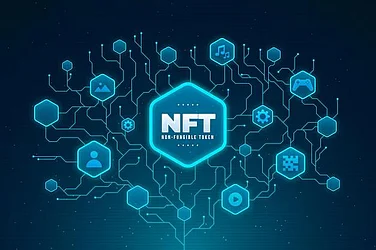Interoperability has been the most pressing problem in building robust crypto infrastructure within the emerging blockchain and decentralized ecosystems world. With crypto ecosystems expanding further, they are not restricted to individual chains operating in parallel any longer. Instead, the anticipation these days is that different blockchain networks have to share information, interact, and facilitate frictionless operation across technology chasms. Interoperability is not a nicety—rather, it is a blocker to the long-term scalability, sustainability, and usability of the decentralized web.
Enabling this interoperability in the world of crypto is a multi-aspect problem. It exists in the form of tying together broken protocols, designing secure communication layers, implementing standard data formats, and unifying governance systems across fragmented networks. Not attaining interoperability leaves the decentralized internet vision fragmented and incomplete and ultimately disintegrates the very innovations blockchain technology was supposed to make possible.
Understanding Interoperability in Crypto Systems
Crypto systems interoperability in its true essence is the capability of different blockchain networks to communicate with one another within a decentralized, trustless, and secure environment. The interaction may range from as simple as token exchange between networks to sophisticated mechanisms such as calling of smart contracts between multiple blockchains or exchange of state data for consensus. Interoperability can function only if it enables blockchains to talk to one another without taking away from their unique security designs or depending on centralized middlemen.
Interoperability configuration, technically, refers to the capability of triggering cross-chain communication systems that enable verifiable interactions. These systems require authentication of the origin, integrity, and end reality of data from external sources. Unlike systems capable of managing using API-based integration, blockchain interoperability must operate based on decentralized principles—where data cannot be forged or tampered with, and verification processes must occur without taking a point of failure for granted.
This also means constructing systems in which all various consensus mechanisms coexist and can talk to each other. Proof-of-stake networks, proof-of-work chains, and others all possess their protocol, and thus communication among them is a sophisticated process with very specialized infrastructure configurations.
The Infrastructure Layers That Must Interoperate
To create an actually interoperable crypto infrastructure, interoperability would need to be handled at a variety of levels of foundation. These would encompass the networking level, wherein nodes and systems actually communicate; the consensus level, which governs how blockchains verify external information; the data level, where information is encoded and stored; and the application level, where decentralized applications (dApps) will have to execute flawlessly between chains.
In the network layer, nodes on a blockchain must find and route messages to nodes on other chains and thus require common protocols for cross-chain messaging. In the consensus layer, networks require mechanisms for ensuring foreign-chain data finality and correctness—most commonly in the form of cryptographic proofs or light-client verification protocols. The data layer must be able to offer the ability to read and interpret data, for example, transaction hierarchies or state transitions, between systems whose internal architectures may be quite dissimilar from one another.
Even at the application level, interoperability is necessary to develop decentralized applications that are functional over ecosystems. This involves having smart contracts in place to invoke or react to other contracts in fully isolated chains, without compromising logic integrity and execution guarantees. All such layers need specialized infrastructure components to guarantee consistency, security, and operational reliability.
Security Implications in Interoperable Crypto Systems
While interoperability unleashes potential and flexibility in blockchain networks, it also has the stringent security consequences. If two or more blockchains are inter-operating, they are basically exposing themselves to external interaction—opening more surface space to possible vulnerability. Compromise or failure of one network can most likely cascade down onto others, especially if trust assumptions are not properly vetted or verification levels are low.
Hence, interoperability setup thus also means setting up secure security environments that take into account external risk factors. This means the creation of systems for cryptographic identification, message integrity checks, and agreement-level confirmation checks. Systems are also to be set up to counter replay attacks, data impersonation, and state inconsistencies potentially caused by asynchronous communication between chains.
It also includes the authenticity of data. Since blockchains are supposed to be self-sufficient, any external data will have to be authenticated through a decentralized system which is not reliant on one bridge operator or validator. If it cannot be done, the entire trustless system is compromised. Due to this, interoperability infrastructure must also prioritize security-first design that can handle both malicious actors and harmless inconsistencies.
Governance and Protocol Compatibility Problems
Another critical building block in the development of interoperable infrastructure is governance and compatibility between involved blockchains. As these are not conventional software ecosystems, but decentralized communities who all share their own development paths, protocol blueprints, and schedule updates, coordinating them to reach interoperability is not just a technical challenge—but a socio-political challenge as well.
Different networks may accommodate different protocol standards, incompatible security prerequisites, and asynchronous governance decisions, all of which compromise interoperability. Standardization of infrastructure to work across different distinctions requires technical standardization as well as harmonized governance models. Absence of interoperability standards that are broad-based can render even optimally technically advised infrastructure tenuous or unsustainable in the long run.
Moreover, changes or updates in one network can result in failure of erstwhile working interoperability channels if co-operation cannot be guaranteed. That necessitates ongoing maintenance, protocol flexibility, and open-ended co-operation by the development communities of various ecosystems. The governance entities that enable open standards, upgrade harmonization, and conflict resolution processes are thus required to guarantee long-term congruence of interoperable infrastructure.
Long-Term Viability of Interoperable Infrastructure
The long-term sustainability of interoperable crypto infrastructure depends on the extent to which interoperability is integrated into the design philosophy of blockchains instead of being tacked on later. Interoperability as an afterthought produces fragile systems that do not survive upgrades, security incidents, and congestion. On the contrary, systems with built-in native cross-chain compatibility tend to have more stable, scalable, and secure operation.
With decentralized finance, tokenized assets, and a global digital economy looming on the horizon, cross-chain communication will no longer be a choice but a norm. Hence, building infrastructure today for tomorrow's interoperability needs is not a technical choice—it's a strategic one. It dictates the usability, flexibility, and resilience of the decentralized system at large.
Interoperable infrastructure permits users to move value, data, and logic between platforms without interruption, opening the door to a new era of digital cooperation. As crypto networks develop, interoperability will not simply dictate how the networks interact with each other—it will dictate how the decentralized world works at scale.

























